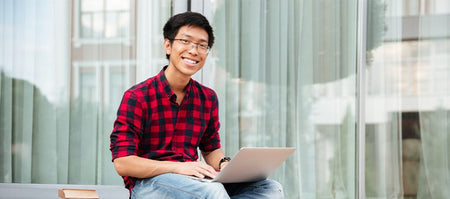Latest Posts

In Your Corner, Student Learning
Four Connections We Need to Make With Every Student
Our goal every day, every week, and every year with every student is to reach and teach them. We study the curriculum, familiarize ourselves with the standards, plan lessons, and develop assessments all with the intention that students will respond, invest, and learn.
These efforts are worthy. They address aspects of instruction and learning that are measured and for which we are accountable. They represent the knowledge and skills we developed in our preparation programs and often are the focus of professional development activities.
Yet, a focus on lessons, teaching, and assessment represents an incomplete picture of the work we do. If we hope to engage learners deeply, challenge them fully, and remove limits on their learning growth, students need to experience more than our instruction.
The truth is that reaching and teaching every student requires attention and commitment. We need to connect with students in ways that lead to deeper understanding of who the student is, what their hopes are, and what will open their hearts and minds to learning.
It can be helpful to think about this more human aspect of our work as having four key dimensions. We might even think about them as central to forming powerful relationships, nurturing trust, and building readiness for learning.
#1. Every student offers a lesson: We need to learn it.
While we prepare lessons for our students to learn, they also offer lessons from which we can learn. Sometimes the lesson is about how to break down and teach a particular skill. The lesson may be about the importance of compassion and patience. It might be about how a student we thought was not capable just needed a different explanation. It could even be that when a student understood that we believed in them and their capacity to succeed, they responded in surprisingly positive ways. The number of potential lessons students can teach us is limitless. The key is to pay attention, reflect, and apply what we learn.
#2. Every student has a story: We need to hear it.
Today more than ever our students come to us from varied backgrounds and with a wide array of experiences. We might make assumptions about who a student is based on socio-economic status, race, family circumstances, and a variety of other factors. However, every student has a unique story that heavily influences who they are. A student from a middle-class family may be subject to abuse or neglect. A student from a family that struggles to make financial ends meet may have a loving, stable, supportive home life. We cannot really know our students until we know their story. Importantly, the stories reflect the perceptions and perspectives of the student, not necessarily their literal life experiences. If we don’t really know our students, we will always be limited in what we can teach them.
#3. Every student possesses a gift: We need to find it.
It can be a challenge to believe that some students have a gift or special talent. They may not show a particular strength or ability. Yet, residing inside of them may be a spectacular gift. It may not relate directly to academic learning. It may even manifest itself in unacceptable behavior. Nevertheless, the key is to look for the gift each student possesses. When we find it, we can encourage, coach, and develop it in ways that benefit the student. Even if we never really find the special talent a student has, the search can result in the student beginning to believe that they have a talent worth discovering and developing. When we see ourselves as talent scouts and searchers for special gifts and students feel our interest and confidence, they will find it difficult to resist searching too.
#4. Every student holds a dream: We need to embrace it.
We may not think that every student has a dream, but they do. It may be grand and unrealistic. Or, it may be as small as having a consistent place to sleep, or a family on whom they can depend. The dreams our students have may not be the dreams we would choose for them, but their dreams are not ours to choose. What is important is that we take the time to listen and accept their dream, even if it is the dream of the week. When we know and support the dreams students hold, we have special access to what is important to them. We can also connect what we are asking them to learn with what they find relevant and purposeful. Of course, over time, we may be able to influence the dreams students hold. We may be able to help them see a bigger picture and to dream higher. However, we should never diminish or undermine the dreams students hold. We cannot know whether the dream they hold may someday become reality.
The role of an educator can be stressful and even discouraging at times. Yet, we have amazing opportunities to support and develop young lives in ways that will last a lifetime. We just need to learn the lessons they can teach us, hear the stories they can tell us, see the gifts they can show us, and embrace the dreams that give them hope and purpose.

In Your Corner, Thinking Frames
Improving Learning Requires Unlearning
What we think we know has a powerful impact on what we believe, how we behave, and what we see. Our beliefs and perceptions often grow out of early experiences in formal education, what our parents and other adults told us, and the culture in which we grew up.
Yet, what we believe and how we see the world are not always accurate. In fact, some of the things we believe and many of our perceptions may be in error. Still, we cling to them because they are familiar. In many cases, they have worked well enough for us in the past to leave their value unquestioned.
At the same time, just because some practices and processes have been in place for a long time does not make them perfect, or even highly successful. But they can be difficult to change because they are what we learned they are supposed to be.
Meanwhile, we are faced with changing and growing expectations for outcomes, especially in education. In response, we can be tempted to double down on what we know and how schools have traditionally operated. In the short term this strategy may seem marginally successful as we tinker and adjust existing practices. Unfortunately, this approach typically holds little promise for significant, widespread, sustainable improvement. If it did, the efforts of the past 30 years to improve schools would have paid off by now.
Maybe it’s time to try “unlearning” some old beliefs and assumptions and try “relearning” by suspending traditions and exploring new ways of thinking. At first, this suggestion may seem naïve. Yet, there are some obvious places we could start that hold significant potential to generate different, more compelling outcomes than we are likely to experience by relying on how things have traditionally been done. Here are five places where unlearning and relearning hold promise:
- What if we let go of the idea that schools should be driven by teaching and replace it with the idea that schools should be driven by learning? If we did, the questions of what students are ready to learn and how to support their learning would replace standardized lesson plans, remediation, and students who fall behind.
- What if we let go of the idea that students who misbehave should be punished and concentrate on helping these students develop better conflict resolution skills, more alternatives to deal with frustration and anger, and build stronger relationships with peers and adults? We know that punishment accomplishes little beyond some immediate compliance. If we focus on developing the capacity of students to be successful in a social environment, we are likely to see changes that are positive and lasting.
- What if we grouped students by readiness to learn rather than age? The average American classroom includes students whose readiness to learn spans 3 ½ years. Yet, we ask teachers to meet the needs of all of these students with a curriculum developed on the assumption that all students are ready to learn at grade level.
- What if we focused on the quality of student learning, not just its speed? We typically give special status and attention to students who learn quickly, even though much of the progress we see may be the result of strong short-term memory skills, or an ability to “read” the expectations of teachers. Meanwhile, some of the deepest, longest lasting learning comes as the result of struggle and time-consuming focus.
- What if we assigned grades and developed “progress reports” based on what students learn, not just what they know? The traditional grading system gives significant advantage to students who enter classes already knowing much of what will be taught. Meanwhile, students with little background knowledge may learn a great deal, but still fall short of meeting every expectation in the time allocated for the class. The danger is that students who receive the highest grades may be students who learned the least from the experience.
Share Your Tips & Stories
Share your story and the tips you have for getting through this challenging time. It can remind a fellow school leader of something they forgot, or your example can make a difficult task much easier and allow them to get more done in less time. We may publish your comments.
Send Us An Email













